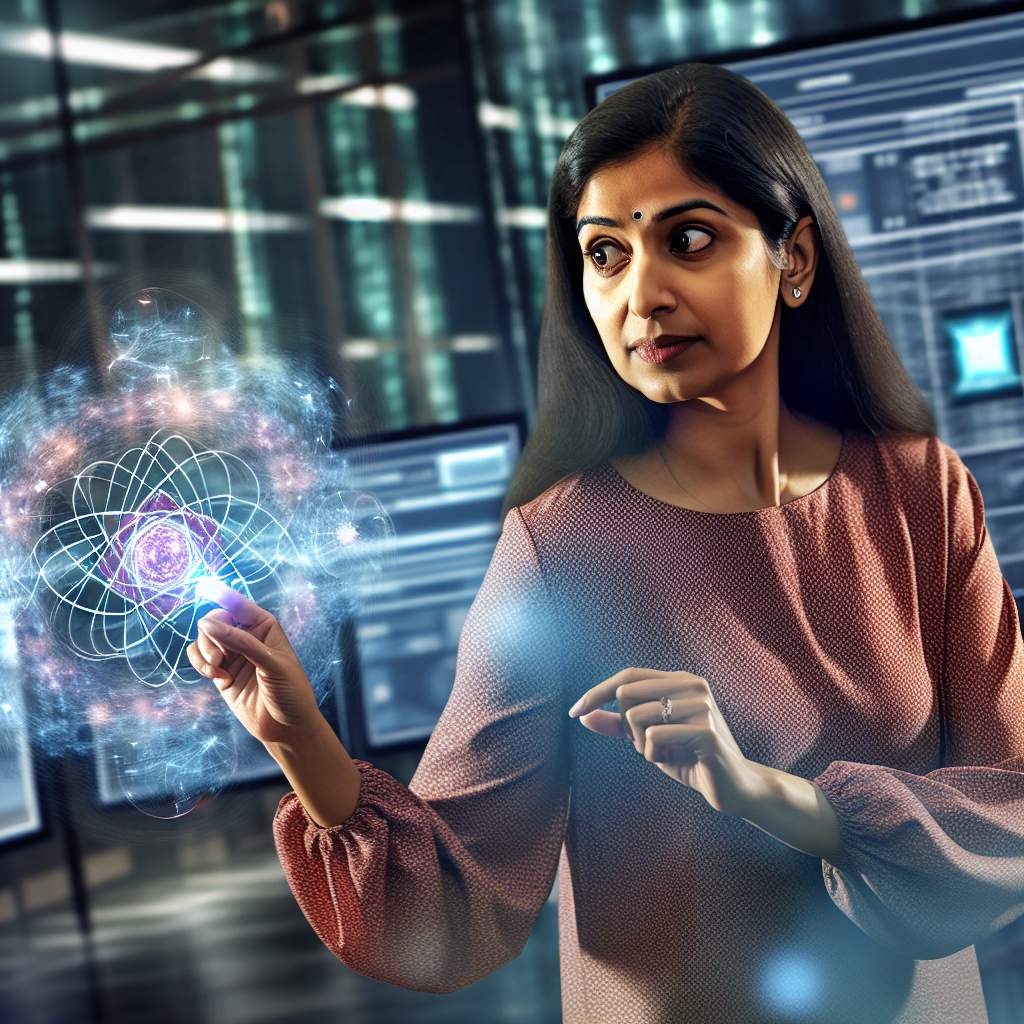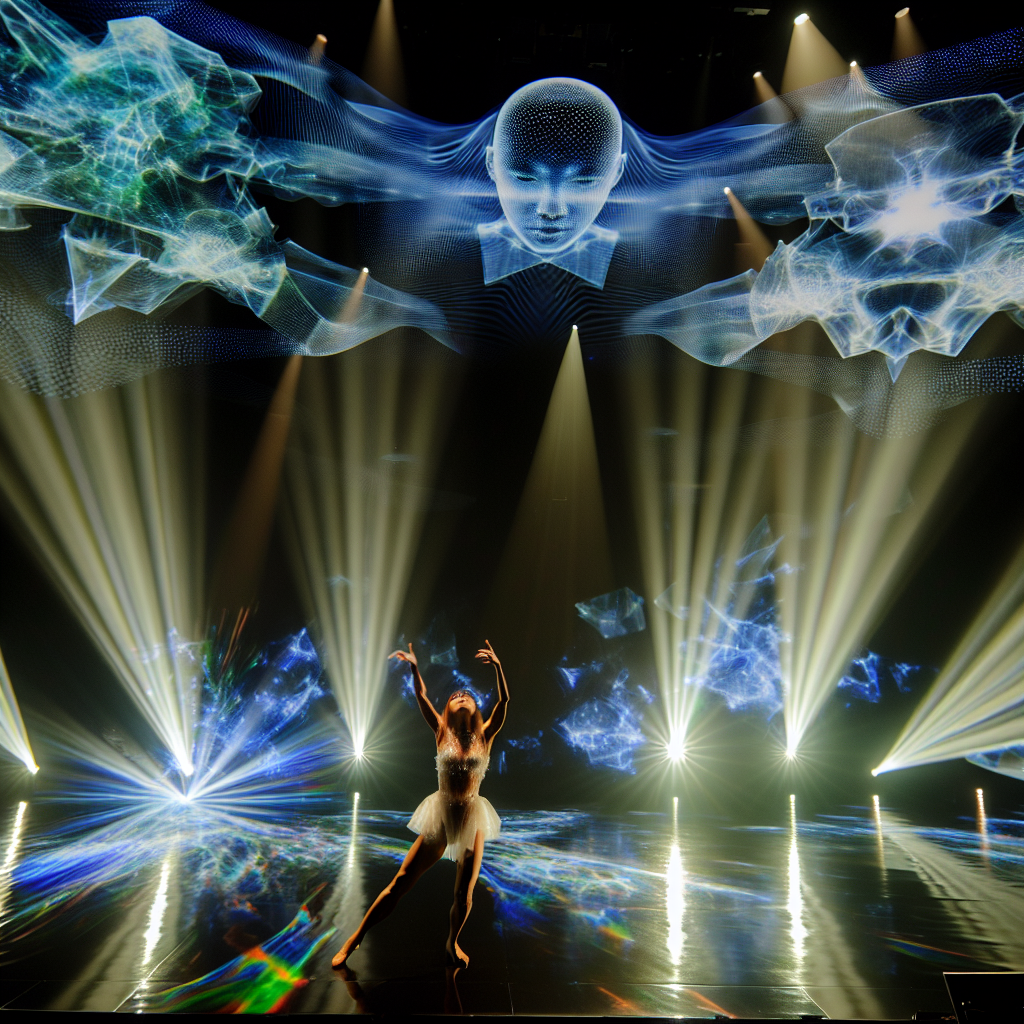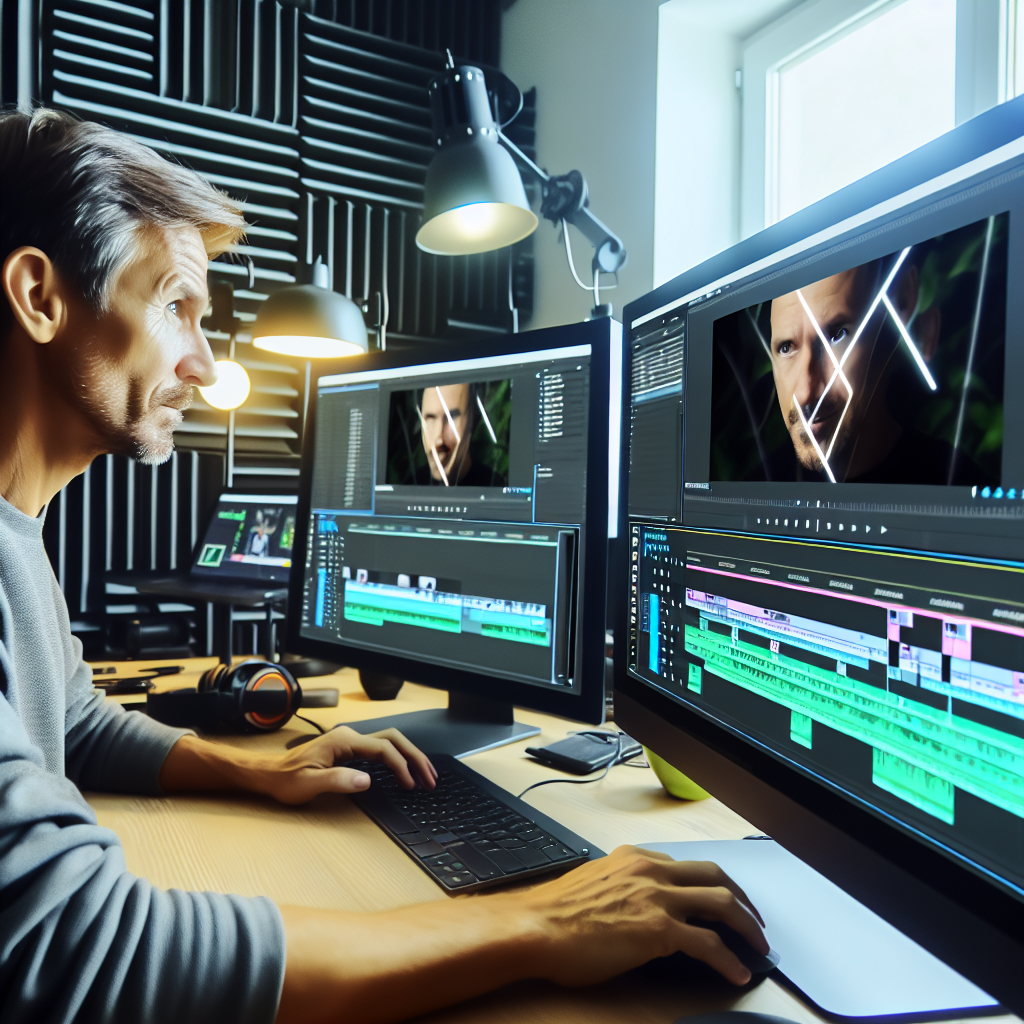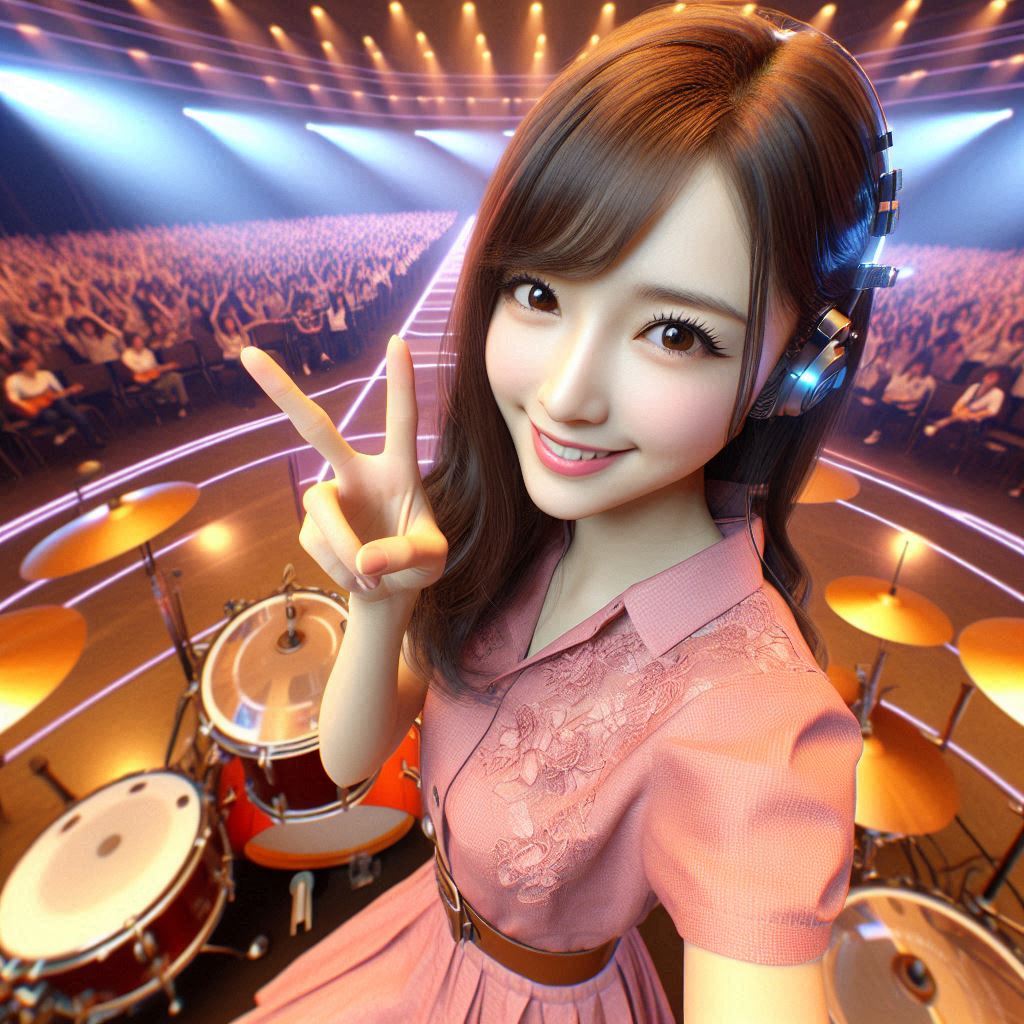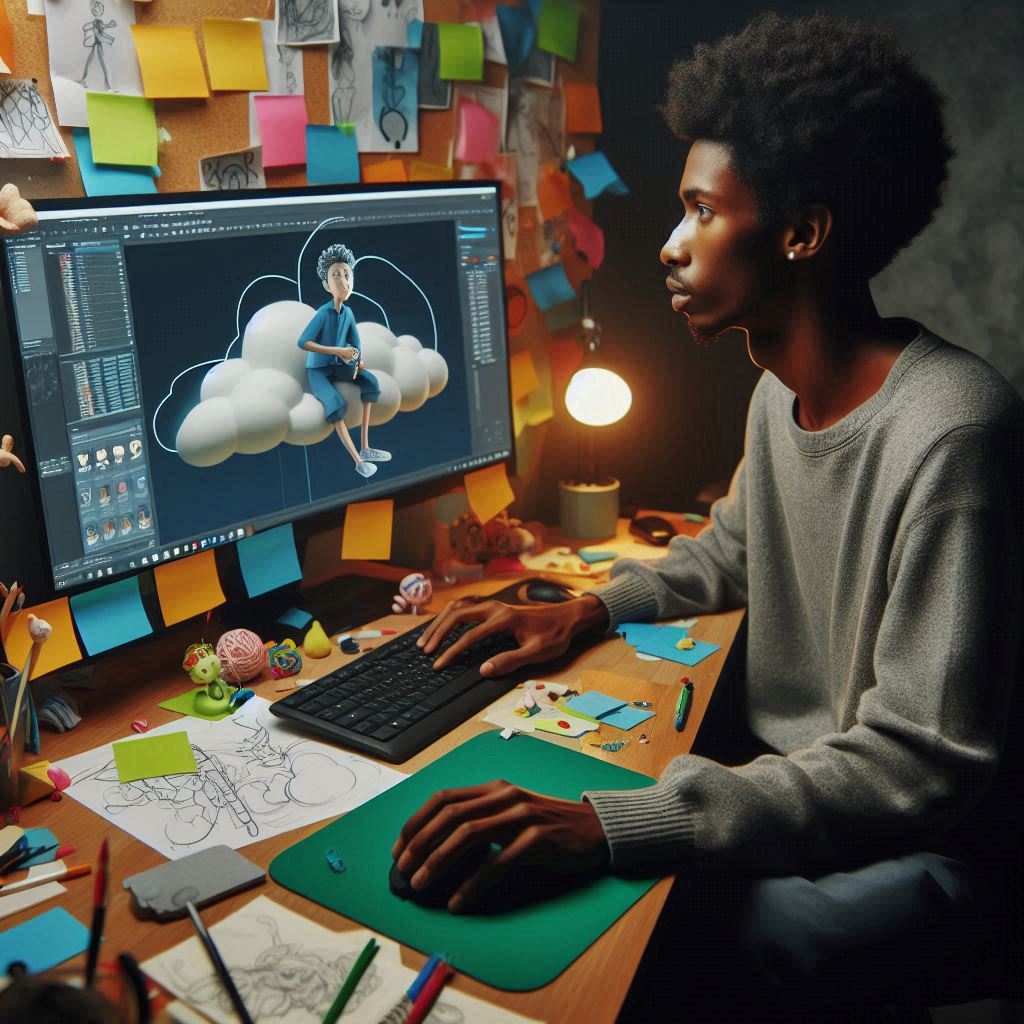Introduction
Let’s explore immersive audio design software for creating 3D soundscapes in movies
Overview of immersive audio design in the film industry
Immersive audio design revolutionizes the film industry, creating rich sound experiences.
Filmmakers increasingly utilize advanced sound techniques to deepen emotional engagement.
3D soundscapes transform ordinary viewing into extraordinary experiences.
They envelop audiences, making them feel as if they are part of the story.
Importance of 3D soundscapes in enhancing viewer experience
Sound is a crucial element in filmmaking. It enhances storytelling by eliciting emotions and guiding viewer attention.
When effectively designed, audio can evoke feelings of fear, joy, or tension.
This connection helps audiences immerse themselves fully in the on-screen narrative.
Concept of audio design software
Modern audio design software provides filmmakers with innovative tools to craft complex soundscapes.
Users can manipulate sound in multidimensional ways, creating a rich auditory experience.
Software allows for spatial audio manipulation, enabling sounds to move around the listener.
This movement adds depth and realism to the movie experience.
Various software options cater to different needs within audio design.
Programs like Dolby Atmos and Avid Pro Tools stand out for their capabilities.
They support multi-channel audio mixing, allowing sound to originate from various points.
This feature enhances realism, mimicking how sounds occur in our environment.
Moreover, immersive audio design enhances audience engagement.
When sounds come from unexpected directions, they capture attention.
This surprise element heightens emotional responses, making moments more impactful.
Filmmakers can effectively use these tools to reinforce narratives and character arcs.
As technology evolves, immersive audio becomes more accessible.
Independent filmmakers can now create high-quality soundscapes with user-friendly software.
This trend democratizes audio design, empowering more creators to craft compelling stories.
Therefore, immersive audio design software plays a vital role in modern filmmaking.
It enhances the viewer experience through captivating 3D soundscapes.
As filmmakers utilize these tools, they create more engaging and memorable cinematic experiences.
Understanding Immersive Audio Design
Definition of Immersive Audio Design
A standout feature of audio design software for creating 3D soundscapes is the ability to manipulate sound positions in a 3D space.
Users can intuitively place audio objects anywhere in the virtual environment.
This functionality allows for dynamic storytelling through sound.
For example, audio design software for creating 3D soundscapes lets designers mimic a helicopter flying overhead or footsteps echoing from behind.
These effects enhance the viewer’s experience and offer a sense of realism.
Furthermore, audio design software for creating 3D soundscapes enables sound designers to change audio positions dynamically throughout scenes.
This capability draws viewers deeper into the cinematic experience.
Comparison with Traditional Audio Design
Traditional audio design often focuses on stereo or surround sound formats.
In this model, sound comes from a fixed number of speakers, limiting spatial movement.
We Design & Develop Websites, Android & iOS Apps
Looking to transform your digital presence? We specialize in creating stunning websites and powerful mobile apps for Android and iOS. Let us bring your vision to life with innovative, tailored solutions!
Get Started TodayImmersive audio, in contrast, allows sound to move freely in a three-dimensional space.
It relies on advanced techniques like ambisonics, binaural audio, and object-based audio.
These technologies provide a significantly richer sound experience compared to traditional methods.
Traditional Audio
- Limited to fixed speaker arrangements.
- Sound fields are static and predictable.
- Focus on dialogue clarity and music.
- Lacks immersive qualities.
Immersive Audio
- Utilizes multiple sound sources for flexibility.
- Creates dynamic soundscapes that evolve.
- Enhances spatial awareness and realism.
- Facilitates a deep emotional connection with the story.
Role of 3D Sound in Storytelling and Emotional Impact
Sound plays a crucial role in enhancing storytelling in films.
The emotional impact of a scene often relies on audio elements that accompany visual storytelling.
3D sound can evoke strong feelings, intensifying the viewer’s experience.
By immersing the audience in an audio-visual world, filmmakers create connections between characters and viewers.
Emotional Engagement
- 3D sound creates a feeling of presence.
- Sounds can signify character emotions and intentions.
- Auditory cues enhance suspense and drama.
- Spatial audio enriches the audience’s journey.
World-Building
- Realistic soundscapes enhance settings.
- Ambience reinforces the thematic elements.
- Immersive audio helps establish genre moods.
- Sound can transport viewers to different worlds.
Filmmakers can create uniquely tailored experiences using immersive audio design.
The synergy of visual and auditory elements offers an engaging narrative approach.
As audiences become more accustomed to immersive experiences, filmmakers must adapt their techniques to capture attention.
In this landscape of innovation, immersive audio serves as a critical tool for enhancing narratives.
Understanding immersive audio design is vital for any filmmaker or audio engineer.
This forward-looking approach transforms how we experience film.
By comparing it with traditional audio methods, one can see its superior capacity for emotional impact.
As technology continues to advance, the possibilities for creating poignant soundscapes expand dramatically.
The way stories are told through sound will undoubtedly evolve, providing deeper connections for audiences.
Read: Real-Time Collaboration Tools for Film Editing in Remote Productions
Key Features of Immersive Audio Design Software
Immersive audio design software offers a wide range of features tailored for creating captivating 3D soundscapes.
Understanding these features is crucial for any audio designer working in film.
Below, we cover the common features found in this specialized software.
Overview of Common Features
Modern immersive audio design software often includes several key functionalities:
- Spatial Audio: This feature allows sound designers to position audio in a three-dimensional space. Users can create a realistic sound field, making the experience truly engaging.
- Real-Time Processing: Real-time processing enables users to hear changes as they make them. This immediacy is crucial for fine-tuning audio elements during the design process.
- Support for Various Formats: Many software tools support multiple audio formats, including Dolby Atmos and Auro-3D. This versatility allows designers to work seamlessly across different projects.
- Integrated Mixing Tools: Comprehensive mixing tools within the software streamline the audio mixing process. Designers can adjust levels, apply effects, and pan sound sources effortlessly.
- Visualization Tools: Visualization capabilities help users understand the spatial relationships of sound sources. Graphical representations clarify how audio moves within the 3D space.
Ability to Manipulate Sound Positions in a 3D Space
A standout feature of immersive audio design software is the ability to manipulate sound positions in a 3D space.
Users can intuitively place audio objects anywhere in the virtual environment.
This functionality allows for dynamic storytelling through sound.
For example, designers can mimic a helicopter flying overhead or footsteps echoing from behind.
These effects enhance the viewer’s experience and offer a sense of realism.
Moreover, sound designers can change audio positions dynamically throughout scenes.
This capability helps create moving soundscapes that respond to action on screen.
Such intricacies draw viewers deeper into the cinematic experience.
The control over varying spatial cues enables users to establish depth and directionality.
With this control, sound can feel closer or farther away depending on the narrative context.
This ability to manipulate perception is vital for immersive storytelling.
Importance of User Interfaces and Workflow in Software Selection
When choosing immersive audio design software, the user interface (UI) and workflow are crucial considerations.
A well-designed UI enhances productivity and creativity.
It ensures that users can focus on designing sound rather than struggling with complex menus.
We Design & Develop Websites, Android & iOS Apps
Looking to transform your digital presence? We specialize in creating stunning websites and powerful mobile apps for Android and iOS. Let us bring your vision to life with innovative, tailored solutions!
Get Started TodayA clean and intuitive interface allows for smooth navigation.
Designers can access essential features easily and swiftly.
For example, when integrating different audio tracks, clear labeling and visual organization streamline the process.
Workflow integration also plays a significant role in software selection.
Immersive audio design often requires collaboration with other team members.
Thus, the software needs to facilitate easy sharing of projects and components.
Some software solutions offer collaborative features.
Users can work together in real-time, providing feedback and making adjustments.
This approach speeds up the creative process immensely.
Additionally, customizable workflows can cater to individual preferences.
udio designers can set up their projects according to their unique working style.
This flexibility amplifies creativity and efficiency within the design process.
Integration with Other Tools and Technologies
Another essential feature to consider is the software’s integration capabilities.
Many immersive audio design tools seamlessly connect with digital audio workstations (DAWs).
This compatibility allows sound designers to utilize familiar environments while adding immersive elements.
Furthermore, some software includes support for plugins and third-party effects.
This integration allows users to enhance their sound design capabilities significantly.
Designers can experiment with various effects without leaving their primary software environment.
Additionally, immersive audio software can integrate with visual production tools.
This compatibility is especially important in film production.
By linking audio and visual elements, designers can synchronize sounds correctly with on-screen action.
Final Considerations for Selecting Immersive Audio Software
When selecting immersive audio design software, it’s essential to consider the specific project requirements.
Not all projects demand high levels of complexity, so different software may suit different needs.
Furthermore, trial versions of software can help users assess usability.
Support and community around the software also merit attention.
A robust support system can assist users when they encounter challenges.
Forums, tutorials, and customer support make a significant difference in the learning curve.
Lastly, budget considerations will influence software choice.
High-end software may offer advanced features, but affordability is key.
Balancing budget constraints with the necessary features ensures a smart investment.
In fact, immersive audio design software provides various essential features.
Understanding these characteristics helps designers make informed choices.
Ultimately, the right software plays a significant role in creating impactful 3D soundscapes in movies.
Read: Cloud-Based Game Development Platforms for Indie Game Designers
Popular Immersive Audio Design Software
When it comes to creating immersive 3D soundscapes, audio design software for creating 3D soundscapes plays a crucial role.
We Design & Develop Websites, Android & iOS Apps
Looking to transform your digital presence? We specialize in creating stunning websites and powerful mobile apps for Android and iOS. Let us bring your vision to life with innovative, tailored solutions!
Get Started TodayChoosing the right audio design software for creating 3D soundscapes is essential for achieving desired effects.
Various software options cater to different needs and preferences.
Below, we explore leading audio design software for creating 3D soundscapes available today.
We break down each option based on pricing, features, and user experience.
Selecting the best audio design software for creating 3D soundscapes ensures an engaging and immersive experience for listeners.
Avid Pro Tools
Avid Pro Tools stands as a cornerstone in the audio production world.
Its reputation stems from its powerful recording, editing, and mixing capabilities.
Many professionals prefer Pro Tools for its robust features and DAW (Digital Audio Workstation) capabilities.
Features
- Multi-channel audio tracking
- Comprehensive editing tools
- Support for various audio formats
- Advanced automation capabilities
- Integration with numerous plugins
Pricing
- Standard subscription: $29.99/month
- One-time purchase: Starting at $599
User Experience
- Intuitive interface, familiar to industry professionals
- Strong community support and resources
- Steep learning curve for beginners
Sound Particles
Sound Particles specializes in creating intricate 3D soundscapes.
This software uses a unique particle system to simulate audio sources in space.
Sound Particles allows sound designers to create immersive audio experiences easily.
Features
- 3D audio effects and spatialization
- Real-time audio manipulation
- Multi-channel output support
- Customizable particle creation
- Integration with popular DAWs
Pricing
- Subscription model: Starting at $199/year
- Perpetual license option: $499
User Experience
- Highly visual interface, appealing to creative minds
- Steeper learning curve for those unfamiliar with 3D audio
- Regular updates and feature enhancements
Dolby Atmos Production Suite
The Dolby Atmos Production Suite revolutionizes sound design for filmmakers.
This software stands out for its capability to create sound that moves in a three-dimensional space.
Dolby Atmos offers compatibility with various DAWs, enhancing the creative process.
Features
- Immersive audio object-based mixing
- Flexible track management
- Real-time rendering of audio effects
- Support for various audio formats including binaural
- Integration with leading audio software
Pricing
- Standalone purchase: $299
- Integrated within Dolby Atmos-enabled DAWs
User Experience
- Clear, user-friendly interface with extensive tutorials
- High-quality sound output recognized industry-wide
- Regular collaboration with leading film studios
Native Instruments Komplete
Native Instruments Komplete is a comprehensive suite of virtual instruments and effects.
It provides a robust platform for sound designers creating immersive soundscapes.
Komplete integrates well with various DAW setups, making it a versatile choice.
Features
- Wide range of sample libraries and virtual instruments
- Advanced synthesis and sound design tools
- Compatibility with MIDI and various controllers
- Integrated effects processing and sound shaping
- Regular updates and new instrument releases
Pricing
- Komplete Standard: $599
- Komplete Ultimate: $1,199
- Discounts available for students and educators
User Experience
- User-friendly interface with easy navigation
- Strong community and support forums
- Comprehensive documentation for learning
Comparative Analysis
Choosing the right immersive audio design software involves considering various factors.
Here’s a comparative analysis of the discussed software options:
| Software | Price | Key Features | User Experience |
|---|---|---|---|
| Avid Pro Tools | $29.99/month or $599 one-time | Industry-standard audio editing, automation | Excellent support, steep learning curve |
| Sound Particles | $199/year or $499 one-time | 3D spatial audio, real-time manipulation | Visually engaging, complex for beginners |
| Dolby Atmos Production Suite | $299 | Object-based mixing, immersive audio effects | User-friendly, industry-recognized quality |
| Native Instruments Komplete | $599 or $1,199 | Wide range of instruments, sound design tools | Accessible UI, strong community support |
By understanding the distinct aspects of each software, you can choose the best fit for your audio design needs.
Whether you prioritize advanced features, affordability, or user experience, there’s an option available to elevate your immersive audio design capabilities.
Read: Interactive Storytelling Software: Revolutionizing Digital Comics in 2024 & 2025
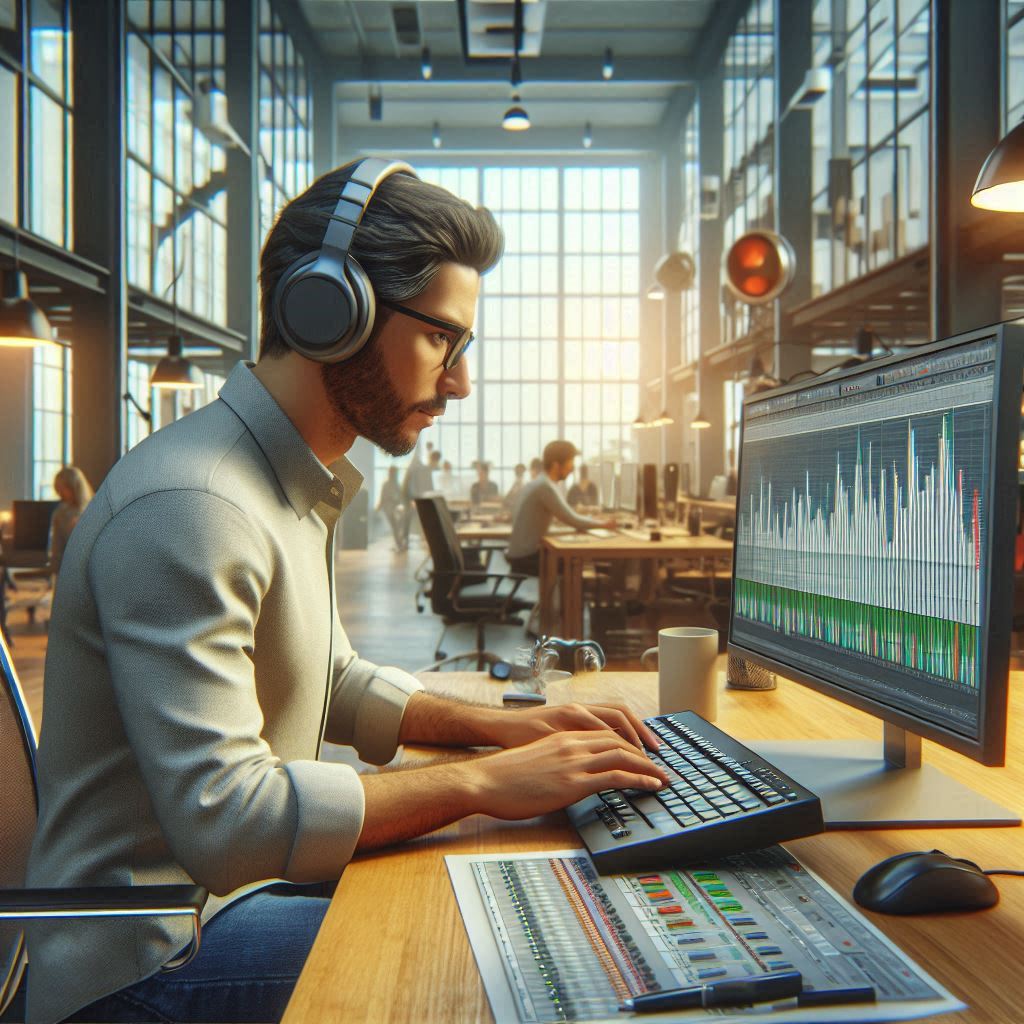
Integrating Immersive Audio in the Filmmaking Process
Incorporating immersive audio into filmmaking requires audio design software for creating 3D soundscapes.
This software helps elevate the viewer’s experience beyond mere background sounds.
By using audio design software for creating 3D soundscapes, filmmakers create a layered soundscape that transports audiences into the film’s world.
With the right audio design software for creating 3D soundscapes, creators can enhance storytelling through dynamic sound.
Ultimately, utilizing audio design software for creating 3D soundscapes immerses audiences in the cinematic experience, making it more engaging and impactful.
Step-by-Step Guide on Incorporating Audio Design Early in Production
To effectively integrate immersive audio, follow these essential steps:
- Pre-production Planning: Start discussing audio concepts during the early storyboarding sessions. Define tone, mood, and thematic elements with sound in mind.
- Develop a Sound Design Strategy: Outline how sound will tell the story alongside visuals. Consider the emotional impact of different audio cues.
- Collaboration with the Director: Ensure that the director’s vision incorporates audio strategies. Open dialogue helps merge visual and auditory storytelling.
- Engage with Sound Designers: Bring sound designers into the project early. Their expertise can shape how sound complements visuals.
- Record Location Sounds: Capture unique audio elements from filming locations. These sounds create authentic atmospheres and enrich the soundscape.
- Use Field Recordings: Gather specific sounds relevant to key scenes. Unique sounds can enhance the immersive experience during post-production.
- Sound Editing Sessions: Plan editing sessions that include sound design. This blends audio seamlessly into visual editing.
- Test Audience Feedback: Gather audience feedback through test screenings. Pay attention to how they respond to the soundscape.
Importance of Collaboration Between Sound Designers, Directors, and Editors
Collaboration is vital for creating impactful soundscapes.
The synergy between sound designers, directors, and editors leads to a cohesive film experience.
- Shared Vision: A unified vision fosters creativity. Each department contributes unique insights and ideas, enriching the filmmaking process.
- Consistent Sound Theme: Regular communication ensures a consistent sound theme throughout the film. Sound experts can better align with the director’s vision.
- Efficient Problem Solving: Collaborative teams identify and address issues early. They can rapidly resolve challenges related to sound design.
- Enhanced Storytelling: Close collaboration helps realize the film’s story more effectively. Sounds can dictate how audiences perceive characters and plot developments.
- Technical Expertise: Sound designers bring specialized skills. Their knowledge guides directors on utilizing audio technology to its full potential.
Case Studies of Iconic Films That Utilized Advanced Audio Design
Examining successful films reveals effective audio integration techniques.
Here are notable examples of films that showcase advanced audio design:
- “A Quiet Place” (2018): This film uniquely uses silence and sound to build tension. The strategic placement of sound elements enhances the horror experience.
- “Gravity” (2013): The sound design immerses audiences in space’s vastness. The absence of sound in specific scenes emphasizes isolation and intensity.
- “Dunkirk” (2017): Hans Zimmer’s score underlines the film’s tension. The sound design connects multiple storylines, illustrating the chaos of war.
- “The Revenant” (2015): This film employs natural sounds effectively. The raw audio captures the harshness of nature, enhancing the protagonist’s struggles.
- “Mad Max: Fury Road” (2015): The relentless soundscape mirrors the film’s frenetic pace. Dynamic audio elements keep audiences on edge throughout the film.
These films demonstrate the importance of immersive audio design in storytelling.
They showcase how well-crafted soundscapes allow viewers to engage deeply with the narrative.
The Future of Immersive Audio in Filmmaking
As technology advances, filmmakers must adapt to new audio design tools.
We Design & Develop Websites, Android & iOS Apps
Looking to transform your digital presence? We specialize in creating stunning websites and powerful mobile apps for Android and iOS. Let us bring your vision to life with innovative, tailored solutions!
Get Started TodayEnhanced software capabilities allow for richer soundscapes and immersive experiences.
- Augmented Reality (AR) and Virtual Reality (VR): These platforms demand innovative audio solutions. Immersive sound reinforces the player’s sense of presence.
- Spatial Audio Technology: This technology creates three-dimensional sound experiences. It enhances realism, providing richer audio landscapes.
- Real-Time Sound Design: Future films may employ real-time audio generation. This enables adaptive soundscapes responding to viewer interactions.
- Accessibility Features: As inclusivity increases, audio descriptions will play a critical role. Immersive audio design can enhance understanding for audiences with hearing impairments.
- AI-Powered Audio Tools: Artificial intelligence can assist sound designers. These tools may analyze scripts to suggest audio cues and themes.
In essence, integrating immersive audio design into the filmmaking process is essential.
Following a structured approach not only elevates a film’s narrative but also creates an unforgettable experience for viewers.
The collaboration between sound designers, directors, and editors is crucial.
Successful case studies demonstrate that advanced audio design can transform storytelling.
By embracing future technologies, filmmakers will continue defining the soundscapes of tomorrow.
Read: VR Live Concert Software for Event Planners Elevating Experiences
Techniques for Creating 3D Soundscapes
Creating 3D soundscapes requires a collection of specialized techniques.
Each technique offers unique benefits for enhancing audio immersion.
Understanding these techniques helps sound designers craft more engaging experiences.
Overview of Key Techniques
Three primary techniques dominate the field of 3D audio design:
- Binaural Recording: This technique captures sound in a way that mimics human hearing. It uses two microphones, positioned to approximate the placement of human ears.
- Ambisonics: Ambisonics involves capturing sound from multiple directions. This method encodes audio into a spherical format, allowing for playback on various playback systems.
- Object-Based Audio: This approach allows sound designers to manipulate individual audio objects within a sound field.
Designers can place specific sounds in a three-dimensional space, offering precise control over delivery.
Discussion on Layering, Panning, and Dynamic Audio Elements
Effective soundscapes require skillful layering and panning.
Layering involves stacking multiple audio tracks to create a rich sonic tapestry.
This technique enhances depth and dimension by incorporating diverse sound elements.
Panning refers to distributing sounds across the stereo field.
Proper panning facilitates a believable auditory experience.
Use panning to position sounds left or right, enhancing spatial awareness.
Dynamic audio elements play an essential role in creating an immersive environment.
Dynamic audio responds to changes in the scene.
For instance, increasing intensity during action sequences grabs the audience’s attention.
Layering Sounds
- Start with a primary sound layer.
- Add secondary layers that complement the primary sound.
- Incorporate ambient sounds to fill the space.
- Experiment with textures and tones for richness.
Panning Techniques
- Use gradual transitions to avoid sudden changes.
- Utilize automation for smoother panning movements.
- Experiment with exaggerated panning for dramatic effects.
- Analyze how sound moves within the scene as a reference.
Dynamic Elements
- Integrate sound variations to maintain interest.
- Respond to character actions with auditory cues.
- Create a sense of environment through audio changes.
- Employ reverb and delay to shape audio depth.
Tips for Achieving Realistic and Engaging Soundscapes
To craft engaging and realistic soundscapes, sound designers should consider the following tips:
- Research and Reference Real Environments: Listen to real soundscapes and take notes. Observe how sounds interact within a space.
- Utilize Field Recording: Capture actual sounds to use in the mix. This technique adds authenticity to the composition.
- Experiment with Spatialization: Leverage stereo and surround sound setups. Test how audio behaves in different environments.
- Focus on Detail: Pay attention to subtle audio elements that can enhance realism. Small sounds contribute to the overall atmosphere.
- Collaborate with Other Artists: Work with filmmakers and visual artists. Collaboration inspires fresh ideas and unique sound approaches.
- Emphasize the Narrative: Ensure audio design reinforces the storytelling. Sound should enhance emotional arcs and narrative elements.
- Regularly Assess Your Mix: Step back to review audio from a fresh perspective. Ensure each element has a purpose and contributes to the overall soundscape.
- Iterate and Refine: Evolve the soundscape through multiple revisions. Iteration allows you to identify flaws and improve overall quality.
Creating 3D soundscapes involves mastery of various techniques.
By focusing on aspects such as layering and dynamic audio, designers craft more engaging experiences.
The goal is to immerse audiences in a world where sound feels natural and alive.
Remember, every sound contributes to a greater narrative.
Engaging sound design transforms a simple movie into an unforgettable sensory journey.
Adopting these techniques and tips will enhance your audio design skills.
Embrace innovation, explore creative possibilities, and never stop learning.
Each project offers an opportunity to push boundaries and explore new horizons.
Ultimately, your soundscapes should resonate with audiences, leaving a lasting impression.
The world of immersive audio design is ever-evolving, and so should your approach to it.
Challenges in Immersive Audio Design
Creating immersive audio environments in movies presents unique challenges for sound designers.
These challenges stem from both technical and creative aspects.
Understanding these obstacles helps sound designers improve their craft and create stunning auditory experiences.
Common Obstacles Faced by Sound Designers
Sound designers encounter various hurdles in their pursuit of perfecting audio for films.
We Design & Develop Websites, Android & iOS Apps
Looking to transform your digital presence? We specialize in creating stunning websites and powerful mobile apps for Android and iOS. Let us bring your vision to life with innovative, tailored solutions!
Get Started TodayThese obstacles can disrupt the workflow and affect the final output.
Below are some common challenges:
- Technological Limitations: The technology used in creating immersive audio can sometimes hinder designers.
- Compatibility Issues: Ensuring the audio files work seamlessly across different platforms presents a significant challenge.
- Playback Environments: Designing sound for various playback environments complicates the process.
- Audience Accessibility: Making immersive audio accessible to diverse audiences is often overlooked.
Technical Issues
Technical challenges in immersive audio design can be formidable.
Sound designers must navigate complex technologies and varying playback systems.
Compatibility
Audio files must be compatible across various devices.
Differences between speakers and headphones lead to inconsistent audio experiences.
This variability forces designers to create multiple audio mixes, which can be time-consuming.
Ensuring uniformity in sound quality becomes a daunting task.
Playback Environments
Different environments affect how audio is perceived.
The same sound might resonate differently in a theater, living room, or mobile device.
Designers must consider how their audio translates across these environments.
They need to optimize soundscapes for spatial accuracy and effectiveness.
This adjustment requires extensive testing in varied settings to ensure immersive experiences.
Audience Accessibility
Making immersive audio accessible to all audiences remains a significant barrier.
Considerations for individuals with hearing impairments are often sidelined.
Providing options like subtitles or descriptive audio tracks can enhance accessibility.
However, incorporating these features requires awareness and additional resources.
Balancing accessibility with the essence of the immersive experience can become tricky.
Creative Challenges
Aside from technical hurdles, sound designers face immense creative challenges.
Crafting a soundscape that complements the narrative without overpowering it is essential.
Balancing Sound Design with Narrative Coherence
Immersive audio should enhance the storytelling rather than distract from it.
However, striking this balance can be tricky.
Sound designers work to create audio elements that align with a film’s emotional arcs and themes.
Too much emphasis on audio can overwhelm the visuals.
Moreover, sound design must feel organic to the cinematic experience.
This necessitates a deep understanding of the story and its characters.
Designers must approach audio not just as an independent element but as an integral part of the narrative.
Additionally, integrating various sound layers can pose a creative dilemma.
Designers must decide which sounds to highlight and which to downplay.
This process requires a delicate touch to ensure clarity amidst complexity.
Audio must function as a cohesive unit rather than as standalone parts.
Collaboration and Communication
Effective communication between sound designers and other creative departments is crucial.
Collaborating with directors and editors helps maintain the film’s vision.
Misalignment in goals can lead to confusion and ineffective soundscapes.
Building mutual understanding with visual teams can fuel creative synergy.
We Design & Develop Websites, Android & iOS Apps
Looking to transform your digital presence? We specialize in creating stunning websites and powerful mobile apps for Android and iOS. Let us bring your vision to life with innovative, tailored solutions!
Get Started TodayRegular meetings and discussions help align sound with visual narratives.
This collaboration ensures sound complements visuals, enhancing the overall storytelling experience.
Time Constraints
Time limitations can exacerbate challenges for sound designers.
Tight schedules often lead to rushed audio work.
This rush can compromise the quality of the sound design.
Additionally, addressing technical issues may require more time than allotted.
Sound designers frequently deal with multiple projects simultaneously.
This multitasking can dilute focus and creativity.
Finding a balance between quality and deadlines proves challenging in high-pressure environments.
Practical Solutions for Overcoming Challenges
Facing these myriad challenges requires innovative solutions.
Sound designers can adopt several strategies to navigate their obstacles successfully.
- Invest in Training: Continuous learning about new technologies improves compatibility and output.
- Conduct Extensive Testing: Regular testing in various playback environments enhances sound quality across platforms.
- Implement Accessibility Features: Incorporate options for the hearing impaired to reach broader audiences.
- Foster Collaboration: Maintain open lines of communication with other departments to align creative visions.
- Prioritize Quality: Allocate sufficient time for audio projects to ensure a polished final product.
In short, immersive audio design in movies presents formidable challenges.
Understanding and addressing these obstacles is imperative.
By fostering collaboration, prioritizing accessibility, and maintaining a balance between sound and storytelling, sound designers can create captivating audio landscapes.
The ultimate goal remains—to enhance the cinematic experience and leave an indelible mark on the audience.
The Future of Immersive Audio Technology
As we delve deeper into the future of immersive audio technology, we see an exciting landscape ahead.
The demand for innovative sound experiences continues to rise, particularly in cinema and gaming.
Understanding the trends, predictions, and impacts of emerging technologies is essential for audio designers and enthusiasts alike.
Trend Analysis: Advancements in Spatial Audio and Virtual Reality Applications
Recent years have witnessed remarkable advancements in spatial audio technology.
This technology enhances the listening experience by allowing sound to come from multiple directions.
Key trends shaping this advancement include:
- Ambisonics: This technique captures and presents sound from all directions, creating a 360-degree audio field.
- Object-Based Audio: Object-based systems allow audio engineers to manipulate sounds as independent entities within a sound space.
- Dolby Atmos: This immersive sound technology provides an experience beyond traditional surround sound systems.
- Augmented Reality (AR): AR applications are integrating spatial audio for more interactive experiences in games and educational content.
- Head-Tracking Technology: Devices that track head movement enhance spatial audio, making sounds appear to come from specific locations.
These innovations are revolutionizing audio design.
The integration of spatial audio enriches storytelling in films and video games.
Creators can now guide the audience’s auditory experience, enhancing immersion.
Predictions for How Audio Design Will Evolve in Cinema and Other Media
The evolution of audio design in cinema and media will transform how audiences perceive stories.
Future predictions point towards several exciting developments in this field:
- Increased Interactivity: Viewers will experience more interactive audio elements, contributing to personalized viewing experiences.
- Integration with Visuals: More seamless integration between visual and audio elements will enhance overall storytelling.
- Dynamic Soundscapes: Future films will feature real-time audio adjustments based on viewer interactions or environmental factors.
- Multi-Sensory Experiences: Filmmakers will craft audio that engages more than just hearing, potentially integrating scent and touch with sound.
- Enhanced Streaming Experiences: With the rise of streaming services, tailored audio experiences will cater to various listener environments.
The rapidly changing landscape of audio technology necessitates adaptability among audio designers.
Those who embrace new tools and methodologies will be at the forefront of this transformative era.
The Impact of Emerging Technologies on Audio Design
Emerging technologies will significantly influence audio design work.
The introduction of artificial intelligence (AI) and machine learning is already reshaping the industry.
Here are several impacts these technologies will have:
- Automated Mixing: AI can help automate complex mixing processes, allowing sound engineers to focus on creative decision-making.
- Sound Refinement: Machine learning algorithms can analyze sound data to provide real-time feedback on quality and balance.
- Content Personalization: AI can tailor audio experiences based on individual preferences, enriching user engagement.
- Adaptive Soundscapes: Intelligent systems can create dynamic soundscapes that adapt according to the narrative flow.
- Object Recognition: AI can facilitate sound design based on visual cues, enabling a holistic sensory experience.
These technologies offer opportunities for both creativity and efficiency.
Audio designers can leverage AI and machine learning to push creative boundaries while improving workflow.
The Role of Collaboration in Future Audio Design
As audio design continues to evolve, collaboration will become even more critical.
Teams will need to work closely to blend audio with visual elements.
We Design & Develop Websites, Android & iOS Apps
Looking to transform your digital presence? We specialize in creating stunning websites and powerful mobile apps for Android and iOS. Let us bring your vision to life with innovative, tailored solutions!
Get Started TodayExpect to see:
- Interdisciplinary Teams: Sound designers, musicians, filmmakers, and game developers will collaborate more closely.
- Workshops and Training: Educational programs will adapt to include cutting-edge technology training in immersive audio.
- Community Engagement: Audio creators will build communities around their craft, fostering innovation and creativity.
Collaborative efforts will help spark new ideas and enrich the audio landscape.
Engaging diverse talent from various fields will push the envelope of what’s possible in audio design.
Final Thoughts
Immersive audio technology’s future holds immense potential for creativity and innovation.
Advances in spatial audio and virtual reality applications pave the way for unforgettable experiences.
As technology evolves, so must the practices and methodologies of audio designers.
The integration of AI, machine learning, and collaborative approaches will further enhance audio experiences.
Designers must stay informed about trends and be ready to adapt to changes.
Their efforts will shape how audiences engage with sound in cinema and other media.
The journey towards the future of immersive audio technology is just beginning.
As we look ahead, the possibilities are limited only by our creativity and willingness to explore new tools and ideas.
The audio landscape will continue to evolve, inviting us all to listen closely.
Conclusion
Recap of the importance of immersive audio design in modern filmmaking
Immersive audio design plays a critical role in modern filmmaking.
It enhances storytelling by enveloping viewers in a soundscape that resonates with them emotionally.
Achieving a seamless auditory experience allows filmmakers to create a more impactful narrative.
The right sound elements can evoke feelings of fear, joy, or suspense, profoundly affecting audience engagement.
Today’s audio software provides filmmakers with tools to craft these rich sound experiences.
These applications have revolutionized the way sound designers approach their work.
By utilizing advanced features like spatial audio, designers can spatially place sounds throughout a three-dimensional environment.
This meticulous attention to detail transforms ordinary audio into an audio landscape that captivates audiences.
Final thoughts on the integral role of audio software in creating unforgettable cinematic experiences
The integration of immersive audio can elevate the cinematic experience to new heights.
Films featuring exceptional sound design often earn accolades and critical acclaim.
Audiences remember these films long after viewing, thanks to their striking soundscapes.
The synergy of visuals and sound enriches narratives, forging a lasting connection with viewers.
Encouragement for aspiring sound designers to explore and experiment with immersive audio tools
As technology continues to evolve, aspiring sound designers should embrace these advancements.
Modern software offers endless possibilities for creativity and experimentation.
Tools such as ambisonic recording, binaural mixing, and 3D audio playback allow designers to explore new techniques.
Experimenting with these technologies can lead to groundbreaking sound designs that push artistic boundaries.
Sound design is an essential component of filmmaking that should not be overlooked.
By harnessing the power of immersive audio design software, filmmakers craft unforgettable experiences.
Aspiring sound designers should dive into this field with curiosity and creativity.
The world of immersive audio awaits, ready for innovative ideas and unique perspectives.
Before You Go…
Hey, thank you for reading this blog post to the end. I hope it was helpful. Let me tell you a little bit about Nicholas Idoko Technologies.
We help businesses and companies build an online presence by developing web, mobile, desktop, and blockchain applications.
We also help aspiring software developers and programmers learn the skills they need to have a successful career.
We Design & Develop Websites, Android & iOS Apps
Looking to transform your digital presence? We specialize in creating stunning websites and powerful mobile apps for Android and iOS. Let us bring your vision to life with innovative, tailored solutions!
Get Started TodayTake your first step to becoming a programming expert by joining our Learn To Code academy today!
Be sure to contact us if you need more information or have any questions! We are readily available.
Put Your Tech Company on the Map!
Get featured on Nicholas Idoko’s Blog for just $200. Showcase your business, boost credibility, and reach a growing audience eager for tech solutions.
Publish Now


